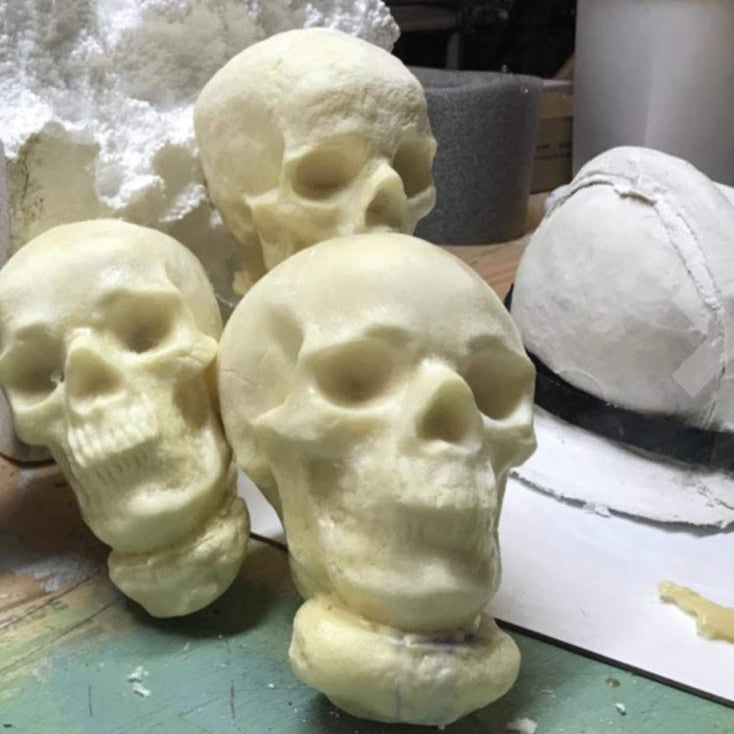
Polyurethane foam instructions and knowledge.
Share
Creating closed-cell polyurethane foam is a straightforward process, but it requires careful attention to detail for the best results. The foam is formed by mixing two liquid components: an isocyanate (Part A) and a polyol resin (Part B). When these two parts are combined, a chemical reaction occurs, causing the liquid mixture to expand and harden into a solid foam. This particular article focuses on a 2-pound density foam, which is a common choice for its balance of strength, insulating and buoyancy (flotation) properties.

Safety First ⚠️
Before you begin, always prioritize safety. The chemicals in polyurethane foam kits can be hazardous if not handled correctly. Wear personal protective equipment (PPE) including:
- Nitrile or latex gloves: To protect your skin from chemical exposure.
- Safety glasses or goggles: To shield your eyes from splashes.
- Respirator with organic vapor cartridges: The fumes released during the mixing and foaming process can irritate your lungs if inhaled potentially causing harm. A well-ventilated area is crucial.
- Apron, coveralls, or protective clothing: Wear clothing or other garments to prevent skin exposure. Disposable coveralls are recommended.
Tools and Preparation 🛠️
To ensure a smooth process and a high-quality foam, have all your tools and materials ready before you start mixing.
- Location: Ensure that you are mixing as near your application site as possible to make certain to be able to get the mixed product poured in place before it begins to expand.
- Two-part foam kit: This includes Part A (isocyanate) and Part B (polyol resin).
- Measuring cups: Accurate measurement is critical. The mixing ratio is 1:1 by volume for 2-pound density foam.
- Mixing container: A clean, dry container large enough to hold the liquid and allow for vigorous mixing. A disposable plastic bucket is a good choice.
- Mixing paddle or drill mixer: A paddle attached to a power drill is an efficient way to mix the components thoroughly in a short amount of time but also using a stir stick to scrape the sides and bottom of the mixing cup ensures a very thorough mix.
- Release agent (optional): If you're pouring the foam into a mold you want to reuse, a release agent will prevent the foam from sticking.
- Application area: Prepare the area where you will pour the foam. Ensure the surface is clean, dry, and free of debris.
The Mixing Process 🧪
Timing is critical when mixing polyurethane foam because the reaction begins immediately upon combining the two parts.
- Measure: Carefully measure equal parts of Part A and Part B according to the specifications. For a 1:1 ratio by volume, pour an equal amount of each liquid into your mixing container.
- Combine and Mix: Pour Part A into the mixing container with Part B. Using your drill mixer or mixer stick, begin mixing immediately and thoroughly. Mix for about 10-20 seconds. The goal is a uniform, creamy mixture with no streaks. Do not overmix, as this can introduce air bubbles and reduce the foam's quality.
- Pour: Immediately after mixing, pour the liquid mixture into the desired area. The mixture will begin to expand within seconds, keep in mind we are now shipping our extended time formula that allows more work time before expansion.
- Cure: The foam will expand rapidly and feel hard to the touch within a few minutes. However, it takes time to fully cure and reach its maximum strength. full cure time is typically less than a few hours but can be up to a full day due to weather conditions. For best results ensure ambient temperature is 72°F or higher.
Common Issues and Solutions 💡
- Incomplete expansion: This is usually due to improper mixing or incorrect ratios. Ensure you are mixing vigorously for the recommended time and that your measurements are accurate.
- Brittle or crumbly foam: This can also be a sign of improper mixing or incorrect ratios. It can also be caused by temperature. The chemicals and the surface you're pouring on should be at room temperature (around 70-80°F / 21-27°C) for the best results.
- Excessive bubbles or voids: While some bubbles are normal, a high number of large voids can indicate that the mixture was over-mixed, trapping too much air.
- Expanded walls of voids: Allow each location you are filling to have a large enough access to allow for excess foam to be able to expand out of the void without deforming it's surrounds.
- Excessive expansion / overflow: Mix in smaller batches to ensure trimming of excess foam is limited.
- Thermal runaway or premature expansion: This can be prevented by mixing in smaller batches as excess heat will not be able to build up as the reaction begins.
By following these steps and paying close attention to detail, you can successfully mix and apply 2-pound density closed-cell polyurethane foam for your project.
Expansion characteristics:
2-pound density: Each gallon mixed yields 4 cubic feet of foam. This consists of 1/2 gallon of part A and 1/2 gallon of Part B.
